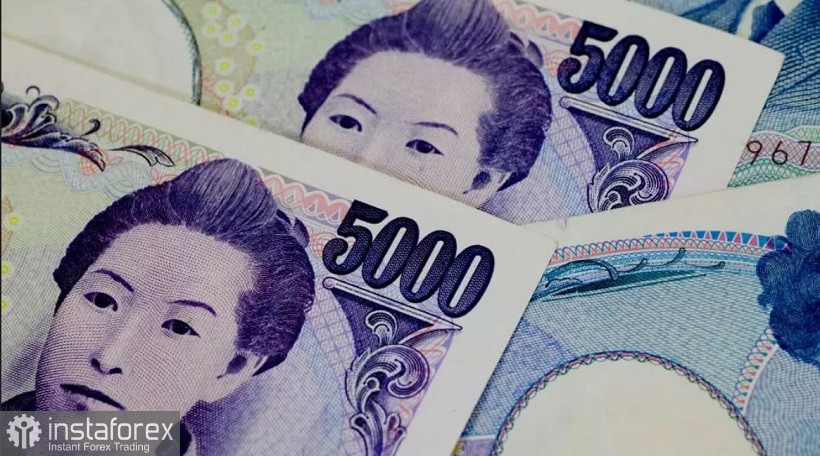The euro/yen cross-pair is stuck in the range of 139.50-141.00, alternately starting from the boundaries of this range. At the same time, for the past three weeks, the euro was steadily gaining momentum, determining the pair's upward trend. From May 26 to June 8, the cross-pair rose by almost a thousand points, demonstrating an almost recoilless growth. Traders reacted to the divergence of the positions of the European Central Bank and the Bank of Japan, which manifested itself quite clearly at the end of spring. Representatives of the ECB spoke for the first time about the need to raise interest rates, while members of the Japanese central bank have maintained (and still maintain) a commitment to accommodative policy. Actually, on these "rails" the pair moved at a steady pace to the upside.

But this week the upward trend has stalled. Bulls began to actively take profits after overcoming the 144.00 mark (this is a 7-year price high). Bears seized the initiative, but eventually got stuck within the aforementioned 139.50-141.00 range. This behavior is partly explained by the fact that the Bank of Japan will hold its next meeting this week, the results of which will be known on Friday, that is, on June 17. Traders are in no hurry to open large positions ahead of this event – neither in favor of the upside nor the downside. On the one hand, representatives of the Japanese central bank (and above all BOJ Governor Haruhiko Kuroda) voiced dovish rhetoric in their speeches, stating that the central bank would not deviate from its course. On the other hand, the same Kuroda recently became concerned about the sharp weakening of the yen: according to him, the rapid fall of the national currency is "undesirable and harmful to the country's economy."
However, most experts are still confident that the BOJ will maintain a soft monetary policy, despite the steady growth of inflation in the country. In particular, the key inflation indicator, which is closely monitored by the central bank (the consumer price index excluding fresh food) increased by 2.1% year-on-year, exceeding the two percent target of the central bank for the first time in the last seven years. But commenting on the inflation report, Kuroda said that "the current inflationary growth is due only to higher energy prices, so it will not be sustainable." There is no doubt that following the results of the June meeting, he will repeat this thesis.
Therefore, the main reason for the decline of the EUR/JPY cross-pair is something else. The yen strengthened its position due to the flight from risks. Asian (except China), European and US stock markets have been plunging for several consecutive days. The market is concerned about the growing energy crisis, the growth of the oil market, the gas market, as well as the resumption of strict quarantine restrictions in China due to the spread of COVID-19 (another blow to supply chains). Gas in Europe, after Gazprom's announcement of further supply cuts, has already exceeded the $1,300 mark per thousand cubic meters.
The stock market also plunged after the release of data on the growth of US inflation. The consumer price index jumped to a 40-year high, reinforcing traders' fears of a possible recession provoked by the Fed's aggressive tightening of monetary policy. The market is again talking about the fact that the US Federal Reserve may raise the interest rate by 75 points at once – in July or September. The scenario of a 50-point increase at the June Fed meeting is not even discussed – it is fully taken into account in prices.
In my opinion, the main "passions" will subside by the end of the week, when traders will win back the results of the Fed's June meeting. For EUR/JPY traders, the divergence of the positions of the ECB and the BOJ will come to the fore again, especially after the Japanese central bank's Friday's meeting. Therefore, we can assume that the upward trend has not yet exhausted itself – in the medium term, the euro will return to annual highs. Despite some hesitation of the ECB members, the central bank has taken a course to raise interest rates, while the BOJ still rejects such a scenario.
From a technical point of view, the EUR/JPY cross-pair on the daily chart is traded between the middle and upper lines of the Bollinger Bands indicator, but at the same time between the Kijun-sen and Tenkan-sen lines. A powerful support level is located at 138.70 – at this price point, the average Bollinger Bands line coincides with the Kijun-sen line. It is advisable to open short positions when crossing this target. But bulls have a different task: they need to settle above the 141.60 mark – this is the Tenkan-sen line on D1. In this case, the Ichimoku trend indicator will form a bullish Parade of Lines signal, which will signal the resumption of the upward trend. In this case, the target of the upward movement will be 144.00 – this is the upper line of the Bollinger Bands on the same timeframe. On the one hand, we are talking about fairly wide price ranges. But on the other hand, the EUR/JPY cross-pair is very volatile – for example, the price was in the area of the 124th figure in March, and in early June it was already testing the boundaries of the 144th figure. Therefore, it is necessary to be patient here: it is advisable to make trading decisions only after breaking through either the support level or the resistance level.





















